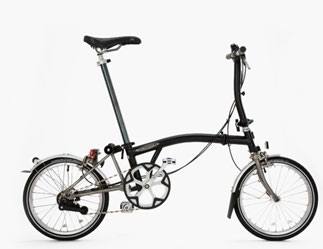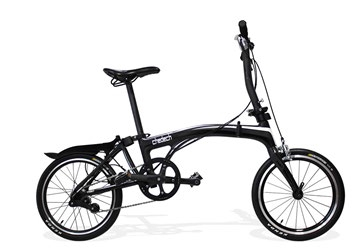Locations
Background
The Brompton Bike manufacturer accused Korean company Get2Get of copyright infringement through its manufacture of a similar folding biked, Chedech.
 |
 |
Brompton Bicycle sought a declaration of infringement and also asked that the court order Get2Get to take its product off the market. The claim was originally issued in December 2018 in the Belgian Companies Court based in Liège.
Brompton Bicycle also had an expired patent, which is why it was so keen to rely on copyright protection.
In turn, the Belgian Court referred questions to the CJEU. It asked whether works whose shape is necessary to achieve a technical result are excluded from copyright protection (the Belgian court had made a finding of fact that the shape of the bicycle was indeed necessary to achieve the technical result). In addition, it asked whether the following factors should be taken into account:
- the existence of other possible shapes which allow the same technical result to be achieved?
- the effectiveness of the shape in achieving that result?
- the intention of the alleged infringer to achieve that result?
- the existence of an earlier, now expired patent, on the process of achieving the technical result sought?
AG Opinion
On 6 February 2020, Sánchez-Bordona delivered his opinion and held that exclusively functional shapes are not protected by copyright. He stated that it was not relevant that other alternative shapes existed if the technical function is the only factor which determines the appearance of a product.
In terms of the relevant factors for the Belgian court to consider, Sánchez-Bordona said that it should consider "the existence of an earlier patent or design right in the same product, the effectiveness of the shape in achieving the technical result and the intention to achieve that result".
Sánchez-Bordona also referred to the recent Cofemel decision (C 683/17) which considered the extent to which designs (in this case, clothing) could be protected by copyright. In that case the CJEU held that, in respect of designs, no other requirement other than originality is required for copyright protection. This therefore took a different approach to those which have previously linked copyright protection to artistic or aesthetic quality, but did confirm that "the protection of designs and the protection associated with copyright may … be granted cumulatively to the same subject matter" i.e. the cumulation of protection of designs on the one hand and copyright protection on the other. However, in Sánchez-Bordona's opinion, he believed that the Cofemel decision contained "a number of clarifications which weaken, so to speak, or reduce the force of the principle of cumulation." He went on to explain that cumulative protection will only be available in certain situations, and the nature of such protection will vary depending on the circumstances, the grant of protection as a design and copyright must not undermine the objectives of such protection (i.e. because copyright offers protection for a longer period of time) and that it will be for the national courts to specify circumstances when such cumulative protection arises.
Comment
The factors which the AG mentioned in his opinion as relevant for the Belgium court to consider are interesting. The existence of an earlier patent in particular would show whether there are any technical constraints which dictated the shape in the first place. In addition, the AG suggests that the intention of the designer of the original shape is relevant. Presumably the thinking is that the original designer was either seeking to protect its creation or seeking industrial application. However, the original designer's intention (i.e. the author) is not usually taken into account when considering the subsistence of copyright.
It is also interesting to consider the AG's opinion in light of the recent Cofemel decision and Sánchez-Bordona's comments in relation to that. Essentially it offers an interpretation of the decision. In Cofemel it was held that originality of work was the main factor for attracting copyright protection, yet Sánchez-Bordona suggests that the author's intention should be taken into consideration too. We will have to wait to see whether the CJEU follows the AG's opinion, but it seems questionable in light of Cofemel.

